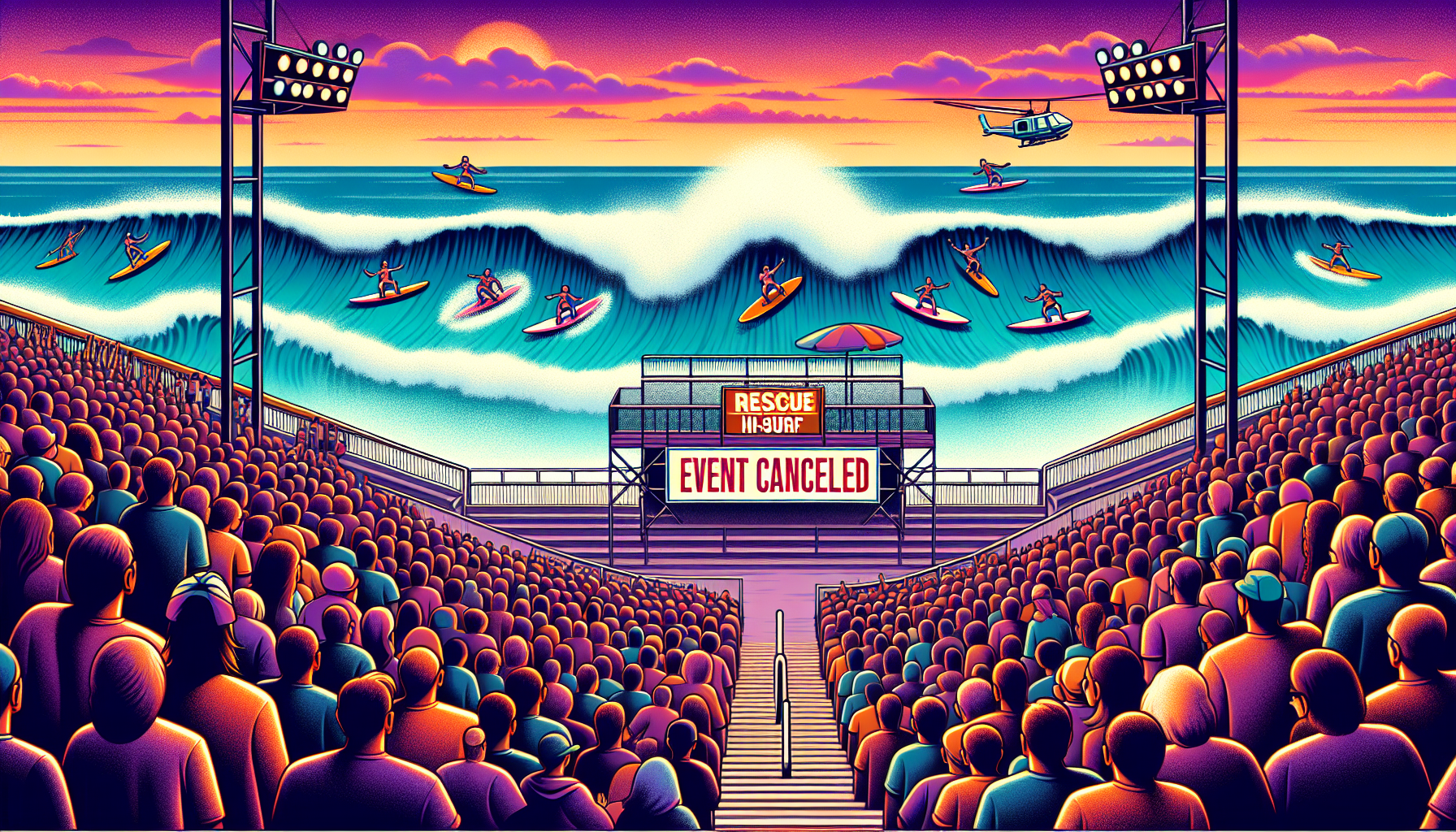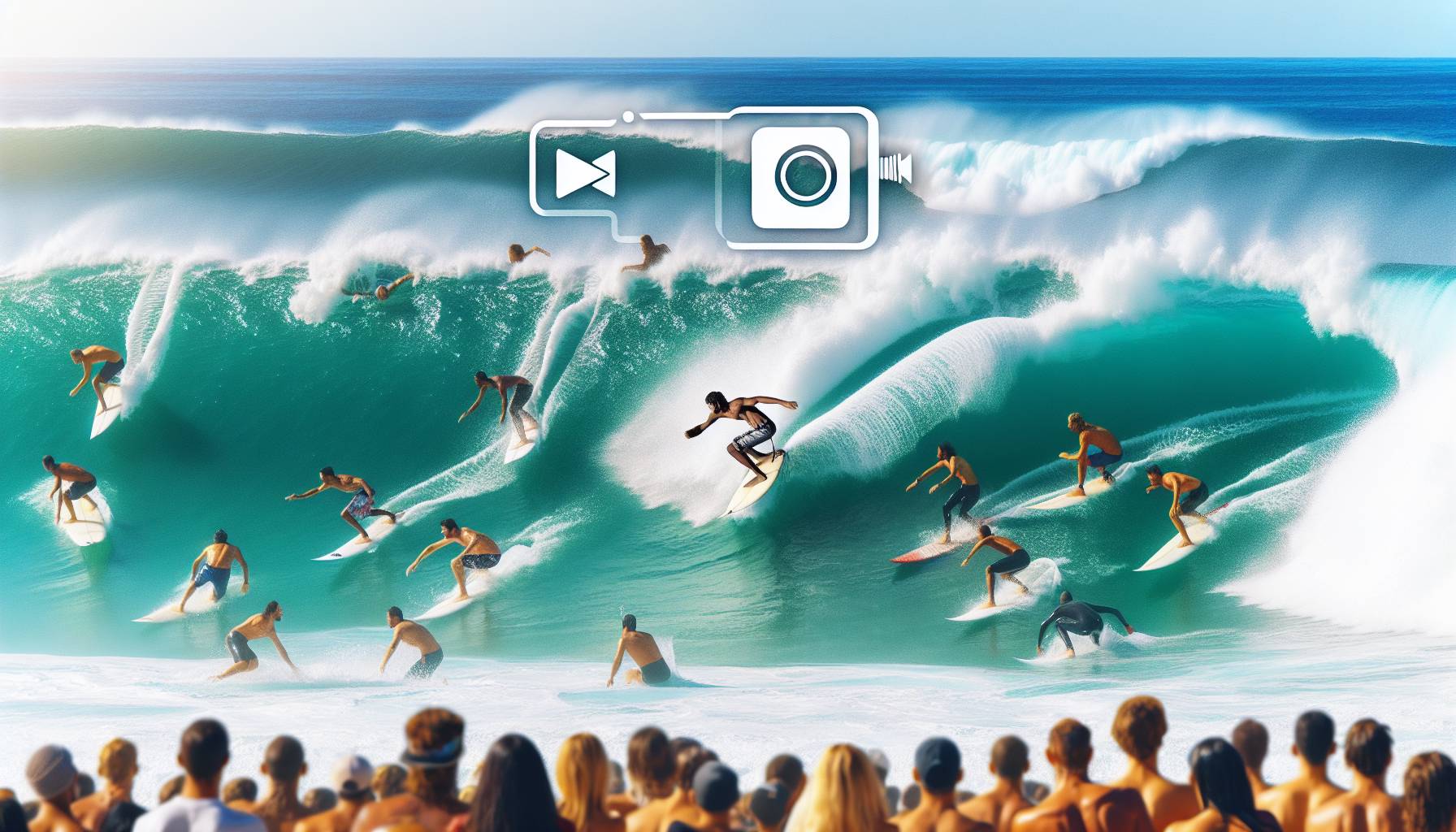
Reasons for cancellation
Fox’s decision to cancel Rescue: HI-Surf after just one season was primarily driven by the show’s inability to connect with viewers. Despite its visually stunning Hawaiian setting and a concept centred around elite lifeguards tackling high-stakes rescues, the series failed to generate the level of audience engagement the network had anticipated. Executives pointed to a lack of sustained interest and underwhelming viewer numbers as key factors in the cancellation.
The network had initially positioned the show as a potential breakout hit, banking on its action-driven narrative and surf culture appeal to draw in a broad demographic. However, internal metrics reportedly showed that the series struggled to retain viewers week-to-week, with many tuning out after the premiere episodes. This drop-off in viewership signalled to Fox that the show was not resonating with its target audience.
Additionally, the show’s performance on digital platforms and social media failed to generate the kind of buzz that often helps new series build momentum. Without strong word-of-mouth or a passionate fanbase to rally behind it, Rescue: HI-Surf was unable to justify the investment required for a second season. The network ultimately concluded that the show did not meet the necessary benchmarks for renewal, opting instead to allocate resources to other projects with stronger audience traction.
Audience reception and ratings
When Rescue: HI-Surf premiered, expectations were high that its blend of surf culture, lifeguard heroics, and dramatic storytelling would resonate with viewers, particularly those drawn to coastal lifestyles and action-packed narratives. However, the initial ratings told a different story. The series debuted to modest numbers, and rather than building momentum, subsequent episodes saw a steady decline in viewership. In key demographics, particularly the coveted 18–49 age group, the show consistently underperformed compared to other primetime offerings.
Critics offered mixed reviews, with some praising the show’s cinematography and commitment to showcasing Hawaii’s natural beauty, while others criticised the writing and character development as formulaic. For Australian audiences familiar with surf-centric dramas and real-life rescue series like Bondi Rescue, Rescue: HI-Surf may have lacked the authenticity and grounded storytelling that typically draws in fans of the genre. The show’s attempt to blend high-octane rescue sequences with interpersonal drama didn’t quite strike the right balance, leaving many viewers disengaged.
Social media engagement, often a key indicator of a show’s cultural impact, remained tepid throughout the season. Unlike other series that spark online conversations and fan theories, Rescue: HI-Surf struggled to generate meaningful buzz. Viewer feedback on forums and review platforms frequently cited a disconnect between the show’s glossy production and the emotional depth audiences expect from character-driven dramas. This lack of strong audience connection ultimately translated into poor retention rates and minimal fan advocacy, both of which are crucial for a show’s survival in today’s competitive TV environment.
Challenges in a competitive TV landscape
In today’s saturated television market, even shows with high production values and unique settings face an uphill battle to secure a lasting place in the lineup. Rescue: HI-Surf entered a landscape where streaming giants and traditional networks alike are constantly vying for viewer attention with an ever-expanding array of content. For a new series to succeed, it must not only stand out visually and thematically but also deliver compelling storytelling that hooks audiences from the outset. Unfortunately, Rescue: HI-Surf struggled to differentiate itself in a meaningful way, despite its picturesque Hawaiian backdrop and surf-rescue premise.
One of the key challenges the show faced was timing. Premiering during a season already crowded with established dramas and new high-profile releases, it had to compete for attention against series with built-in fanbases and aggressive marketing campaigns. Without a strong lead-in or a clear promotional hook beyond its setting, the show found it difficult to carve out a niche. In contrast, Australian audiences are accustomed to surf-related content that blends authenticity with adrenaline, such as Bondi Rescue, which offers real-life stakes and a grounded portrayal of lifeguard culture. Rescue: HI-Surf may have appeared overly stylised by comparison, making it harder to connect with viewers seeking realism.
Moreover, the rapid pace of content consumption means that shows must generate buzz quickly or risk being overlooked. In the case of Rescue: HI-Surf, the lack of viral moments or standout episodes meant it failed to break through the noise. Word-of-mouth, which can be a powerful driver of viewership, never gained traction. This is particularly critical in the current climate, where audience loyalty is often built through social media engagement and binge-worthy storytelling. Without these elements, the show was unable to build the momentum needed to sustain interest beyond its initial episodes.
Ultimately, the cancellation of Rescue: HI-Surf highlights the unforgiving nature of the television industry, where even visually stunning and conceptually strong series can falter if they don’t immediately resonate with audiences. For Australian viewers who value authenticity and emotional depth in surf-related programming, the show’s glossy execution may have felt disconnected from the real-life challenges and camaraderie that define the lifeguard experience.
Reasons for cancellation
Fox has pulled the plug on Rescue: HI-Surf after just one season, and the reason’s as clear as a glassy wave at sunrise — the show simply didn’t hook viewers. Despite its sun-soaked Hawaiian setting and adrenaline-pumping lifeguard action, the series failed to make a splash where it counts: audience engagement.
The network reckoned the show “didn’t grab the audience,” which is telly-speak for “people weren’t watching, mate.” In a world where even the flashiest dramas have to paddle hard to stay afloat, Rescue: HI-Surf got caught inside and never made it past the breakers.
Fox had high hopes for the series, banking on the tropical backdrop and rescue missions to reel in viewers. But in the end, it seems the show was more wipeout than barrel ride — and in the cutthroat surf of TV ratings, that’s a one-way ticket back to shore.
Audience response and ratings
When it hit the screens, Rescue: HI-Surf looked like it had all the right ingredients — sun, surf, and high-stakes rescues. But ratings told a different story. The premiere pulled in modest numbers, and instead of building momentum like a clean swell, viewership steadily fizzled out like a dud set at low tide.
Critics gave it a polite nod, but the audience? Not so much. Social media chatter was quieter than a flat day at Bondi, and fan engagement never really caught a wave. Even with a prime-time slot and a solid marketing push, the show couldn’t carve out a loyal following.
For Aussie viewers who love a bit of ocean drama, it might’ve sounded like a ripper of a series — but the execution didn’t quite stick the landing. The characters lacked depth, the storylines felt recycled, and the action scenes, while flashy, didn’t have the grit or heart to keep folks tuning in week after week.
In the end, Rescue: HI-Surf just didn’t have the legs — or the fins — to stay afloat in a sea of stronger contenders. And in the ratings game, if you’re not paddling hard, you’re getting swept out the back.

